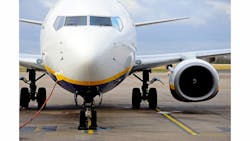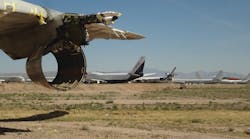Changes in Aviation Aftermarket Influence Spares Demand Patterns
As the air traffic continues to grow at an average of 5.6%, so does the carriers’ need for new capacity globally. As a result, despite the industry’s increasing concerns over possible overproduction, the leading manufacturers are determined to push their most popular aircraft production rates up to a combined total of 100 per month. Nevertheless, if some time ago this would mean the demand for spare parts will rise accordingly, the trends have changed for the aftermarket players.
As carriers worldwide are determined to benefit from the ever-growing demand, the largest aircraft manufacturers - Airbus and Boeing - have pushed their narrowbody production rates to 42 aircraft per month each, while announcing plans to go over 50 in the nearest future. Earlier, such developments within the industry would mean respective changes in airline spare parts stocking levels and parts demand, since increasing demand for air travel used to represent more flight hours and cycles across the global fleet, meaning that the parts in use wear out more quickly. However, some recent trends suggest that a significant structural shift is occurring.
“The recent uptick in traffic coincides with several new trends, which have emerged in the aviation aftermarket, namely the increased popularity of used serviceable material, greater reliability of components, improved aircraft utilization, as well as growing presence of the OEMs in the aftermarket processes. As a result, dependence of spare part sales on the demand for travel and aircraft use has become considerably weaker. In fact, part sales have been slower than suggested by the growth in global available seat kilometers,” shares Zilvinas Sadauskas, the CEO of Locatory.com.
While it may be too soon to draw definite conclusions, many industry players are inclined to believe that the increased used spares consumption in causing the most noticeable disruptions. After all, the worth of this considerably new market is currently heading towards $4 billion (a significant rise from slightly over $1 billion in 2001) at a rate of about 5.5%, as forecasted by IFC International. As a result, according to a recent survey conducted by Oliver Wyman, 84% of airlines are currently adopting an “active serviceable materials strategy”. In the meantime, Canaccord Genuity reports almost a third of parts bought from MROs and OEMs in the end of 2013 were used serviceable material.
As the demand for used materials grows, more and more airlines have been practicing buying entire aircraft for teardown, to get the most of the cost-cutting benefits surplus material provides. Moreover, some have even considered dismantling their own machines for own fleet support, as well as for sale. Consequently, roughly 80% of surplus parts in the aftermarket today come from part-outs. In addition, more and more carriers are requesting used parts support from their providers as a means of extending service lives of sunset fleet types, while becoming more efficient at managing their own spares.
“At the same time, PBH providers have also started offering used parts to lower the service costs, while some OEMs have been utilizing surplus material in order to make product overhauls more cost-effective. For instance, Boeing's recent deal with GA Telesis on selling used airframe and engine parts on the manufacturer’s Boeing Part Page is the latest example of OEMs getting deeper into the aftermarket in search of revenue - even if it means selling used material. All in all, as more and more players see the aftermarket as an increasingly perspective segment, it may well be expected that the familiar rules of the game will continue to change,” concludes the CEO of Locatory.com.
About Locatory.com:
Locatory.com - is an IT company supporting the aviation industry with IT-based Supply Chain Optimisation solutions worldwide. The company develops and maintains its own trading platform catered specifically to the aircraft spare parts aftermarket while offering proactive customer support and enhancing the industry with effective supply chain management solutions.
Locatory.com is a part of Avia Solutions Group - a WSE-listed company with more than 17 subsidiaries providing global aviation business solutions covering everything from aircraft maintenance and repair, crew training, technical training to ground handling, crew leasing, and other aviation related services.
For further information please visit www.locatory.com


